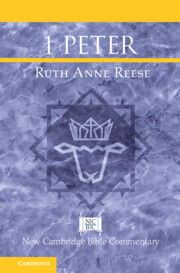Suggested Readings
Published online by Cambridge University Press: 19 May 2022
Summary
This list of suggested reading focuses on recent works of scholarship in English as well as some commentaries.
- Type
- Chapter
- Information
- 1 Peter , pp. 45 - 51Publisher: Cambridge University PressPrint publication year: 2022



